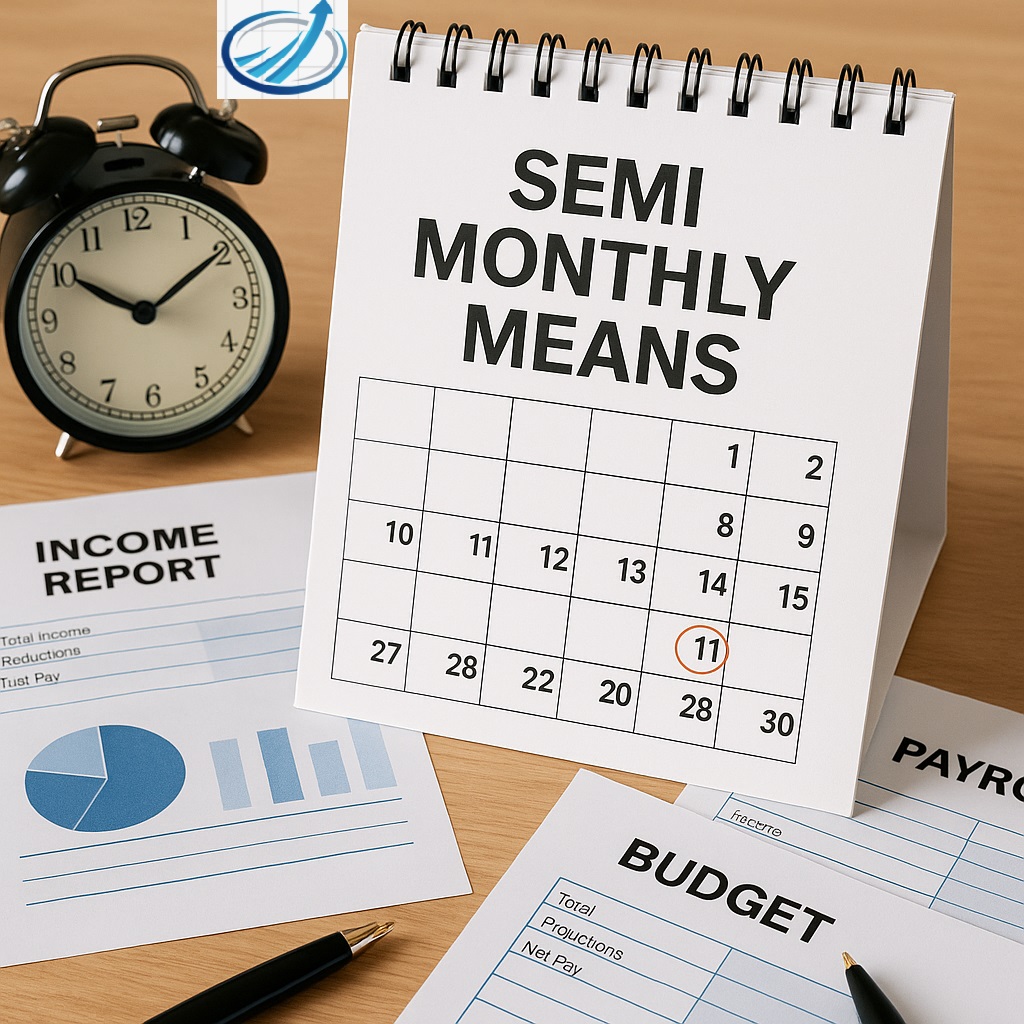When navigating work contracts, billing terms, or budgeting, understanding payment schedules is key. One common term you’ll encounter is semi monthly means, but many people confuse it with similar terms like biweekly. To avoid confusion and plan your finances better, let’s break down what semi monthly truly means and why it matters.
What Exactly Does Semi Monthly Means?
In simple terms, semi monthly means something that happens twice a month, not every two weeks. This schedule typically results in 24 events or payments over a year. For example, if you’re on a semi-monthly payroll, you might be paid on the 15th and the last day of every month, regardless of what day of the week those dates fall on.
It’s important to remember that semi monthly means payments occur on fixed calendar dates, not based on weeks. That’s a key difference from a biweekly schedule, which could vary.
How Semi Monthly Impacts Your Budget
Knowing that semi monthly means two fixed payments every month can help you manage monthly bills more effectively. Since your income arrives predictably, it becomes easier to align your rent, utilities, and loan payments. Unlike weekly or biweekly systems where pay dates can shift around the month, semi-monthly gives you a clearer picture.
However, because the number of days between paychecks can vary (for example, 13 days between the 15th and 28th, but 16 days between the 1st and 15th), you need to budget smartly to avoid running short toward the end of a longer gap.
Advantages and Disadvantages
Advantages:
- Predictable pay dates help with fixed monthly expenses.
- Fewer payroll processing sessions for companies compared to weekly pay.
- Simple to match income with monthly bills.
Disadvantages:
- Longer gaps between payments at times, requiring careful budgeting.
- If payday falls on a weekend or holiday, payment might shift, causing confusion if not well-communicated.
Understanding that semi monthly means consistent but not equidistant paychecks can make a big difference in how you plan your month.
Semi Monthly in Different Scenarios
Besides salaries, semi monthly means can apply in several other areas:
- Subscription Billing: Some service providers charge customers semi monthly.
- Loan Payments: Some financial institutions offer semi monthly repayment plans for mortgages or car loans.
- Utilities: Certain utilities may offer semi monthly billing to ease customer payments.
In each case, knowing that semi monthly means a fixed twice-a-month schedule can help you avoid surprises.
FAQs About Semi Monthly
Q1: Is semi monthly the same as twice a month?
A: Yes, semi monthly means receiving or paying something twice every month, usually on set dates like the 1st and 15th.
Q2: How many pay periods are there in a semi monthly schedule?
A: There are typically 24 pay periods in a year with a semi monthly pay schedule.
Q3: What happens if a semi monthly payday falls on a weekend?
A: Usually, the payment is issued on the previous business day (like Friday) or the next business day (like Monday), depending on company policy.
Q4: Why is budgeting important with semi monthly pay?
A: Because the number of days between checks isn’t always equal, budgeting ensures you don’t run short during longer pay gaps.
Q5: Can utility bills or loans also be semi monthly?
A: Yes, many companies allow semi monthly payment options for bills and loans to make it easier for customers to stay on track.
Conclusion
In short, semi monthly means receiving something twice a month on set calendar dates. Whether it’s your paycheck, a bill, or a subscription, knowing how semi monthly scheduling works can help you plan your finances more smoothly. Being prepared for the slight variations in days between payments is the key to avoiding financial hiccups and maintaining a stable budget throughout the year.


